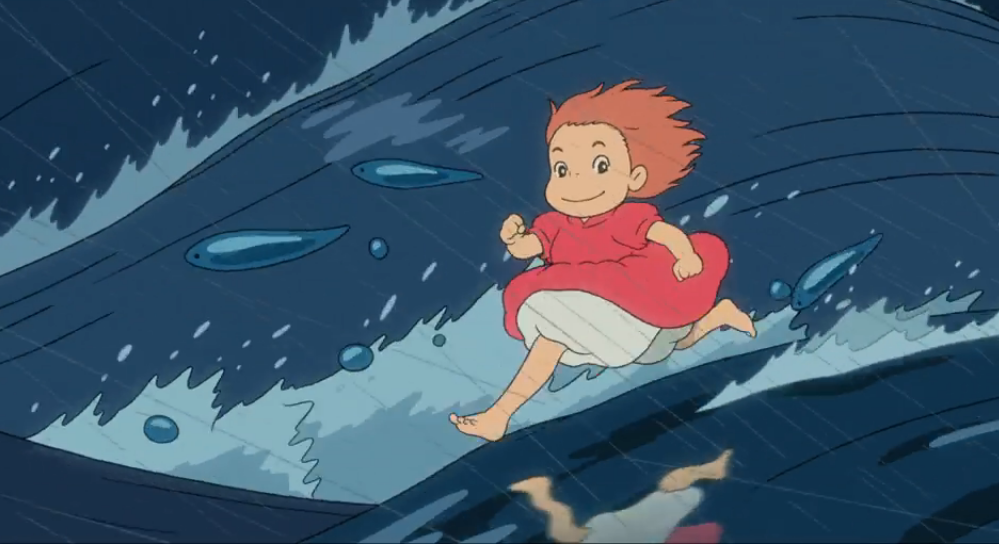Movie Review: Ponyo (2008) directed by Hayao Miyazaki
Brunhilde’s father, Fujimoto, is a sorcerer in love with the sea, in the person of the Ocean Goddess Granmamare. He has long abandoned the land and no longer considers himself human. He’d prefer that Brunhilde and her sisters stay safe under his protection forever in the depths of the sea, but Brunhilde playfully wanders off to explore. She’s accidentally trapped in a glass jar and washed toward the shore, where she’s found by a human boy named Sosuke. Sosuke breaks the glass and frees her, cutting himself, and Brunhilde tastes his blood.

Sosuke names the odd-looking goldfish he’s found “Ponyo,” which she decides she likes better than Brunhilde. Sosuke and his mother Lisa live on a cliff by the shore. Lisa works at the senior center which happens to be next to Sosuke’s kindergarten. Sosuke’s father Koichi is a ship’s officer, and his duty means that he won’t be home on the day scheduled. Sosuke and Ponyo bond a bit before her father comes and takes her home.
Back at the undersea laboratory, Fujimoto learns that Ponyo would rather be on land with Sosuke. And she’s developing a more humanoid body! Apparently, tasting Sosuke’s blood has activated her latent human DNA. In a panic, Fujimoto swallows some of the elixir that fuels his magic, and forces Ponyo back into goldfish shape. As soon as her father turns his back, however, Ponyo is freed by her sisters. In a series of mishaps, Ponyo gets a huge dose of Fujimoto’s elixir, which allows her to assume a fully human shape. It also prematurely sets off a spell her father was preparing for far in the future, sparking off a typhoon.
During the typhoon, Ponyo reconnects with Sosuke, who instantly accepts that she is the same person as his beloved goldfish. The children bond, but the world is in danger. (No one dies though.)
This Studio Ghibli film is loosely based on Hans Christian Andersen’s “The Little Mermaid”, but takes it in a very different direction than most other adaptations. Ponyo is very much not silent or suffering while on land, and the stakes are rather higher than just her happiness. Her relationship with Sosuke feels more real than many Prince/Mermaid forced happy endings.
As always with Ghibli movies, it looks gorgeous, with a special concentration on water effects and sea life. Ponyo’s transformations are cool to see.
Some interesting bits with names: Sosuke addresses Lisa by her given name, and also the women at the senior center, without honorifics. I don’t think I’ve seen that from a child his age in any other Japanese media. And while Fujimoto is dismayed at Ponyo’s choice to change her name, he respects it (and her mother instantly accepts it.)
This one’s more on the “small child” end of the “family movie” spectrum; youngest viewers will be able to appreciate it, as will their parents and grandparents, but I suspect many teenagers will find the movie “babyish.”
Content note: Some of Ponyo’s transformations look painful.
Recommended for families with small children and Ghibli fans.

